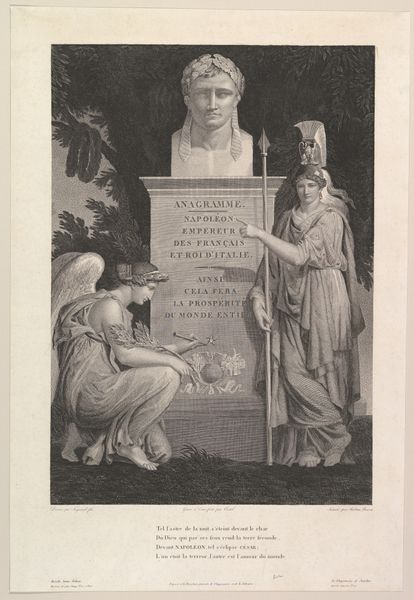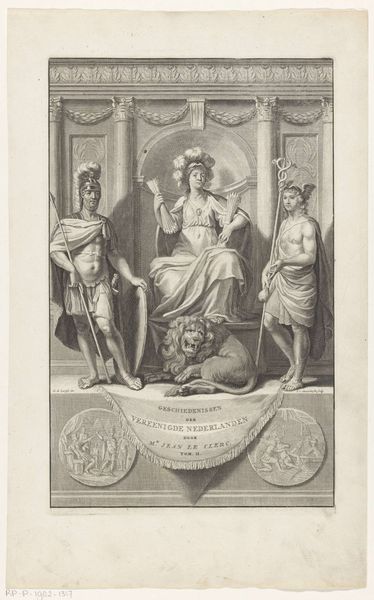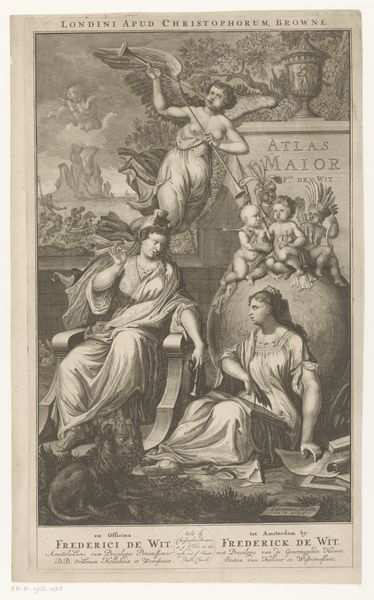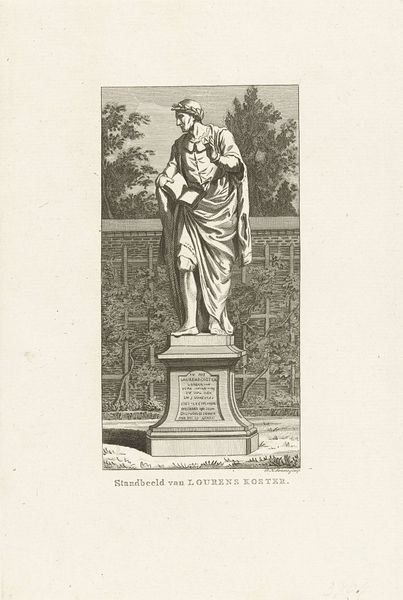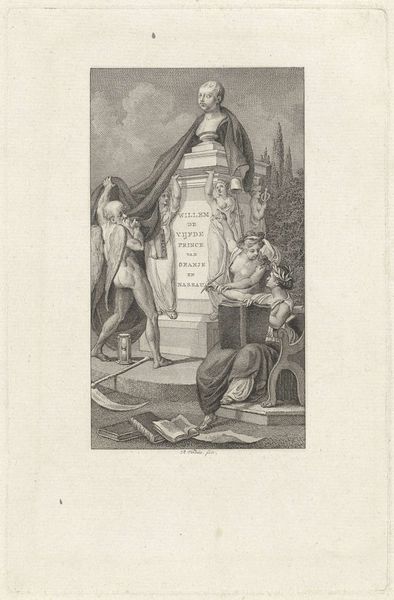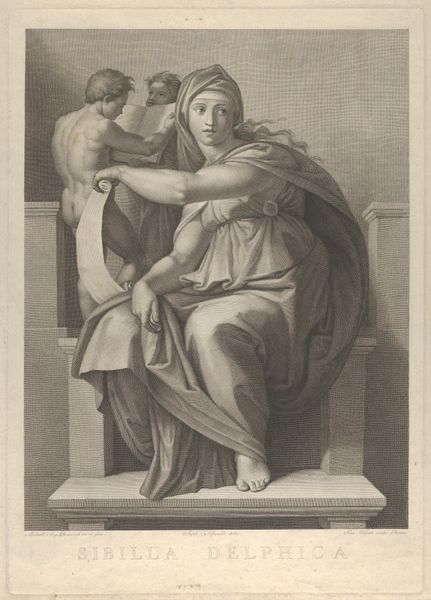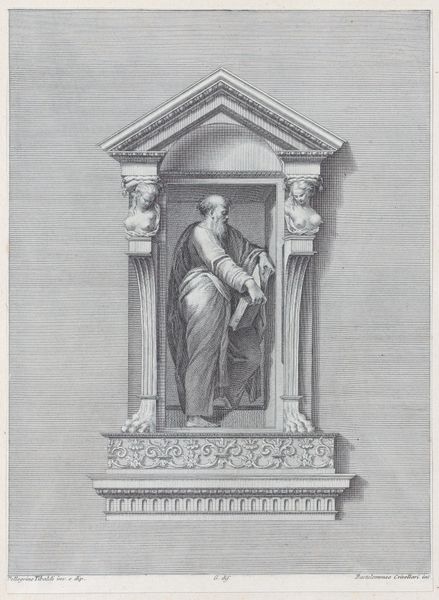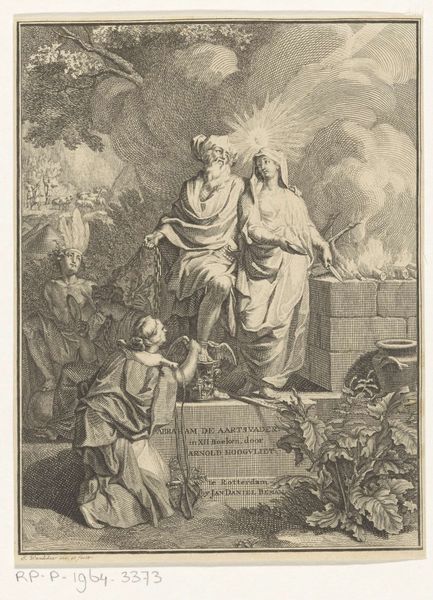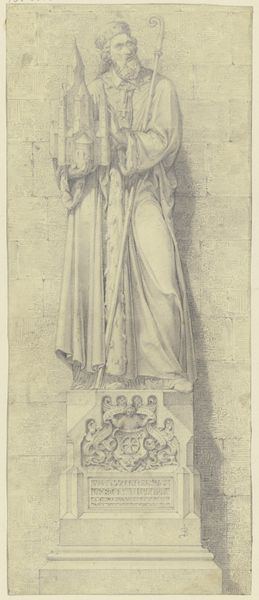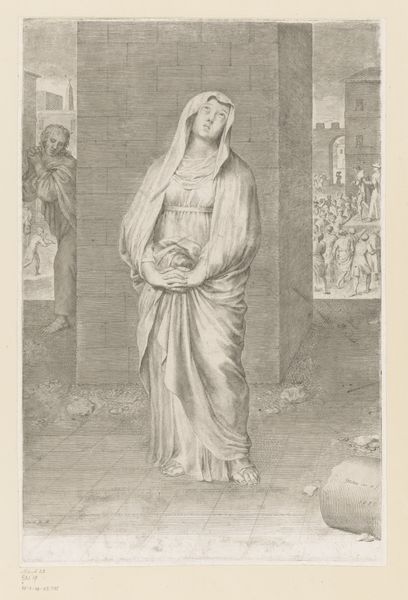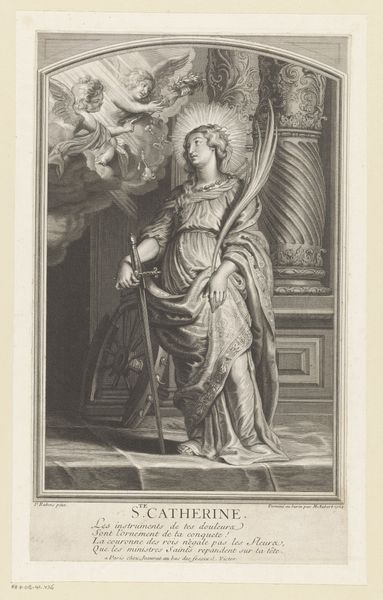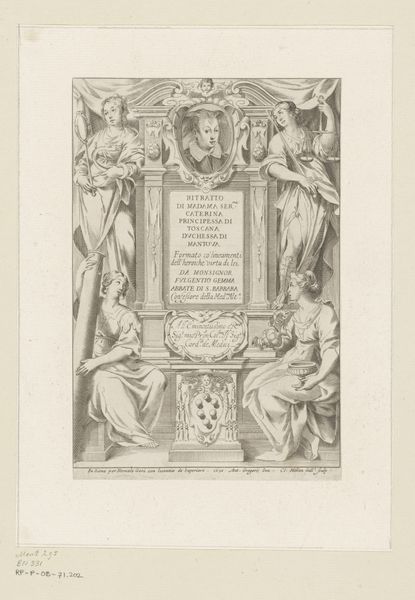
Marie Louise, Empress of the French 1811
drawing, print, engraving
portrait
drawing
neoclacissism
allegory
classical-realism
figuration
men
line
history-painting
engraving
Dimensions: image: 17 3/4 x 12 9/16 in. (45.1 x 31.9 cm) sheet: 22 5/8 x 15 7/16 in. (57.5 x 39.2 cm)
Copyright: Public Domain
Curator: Let's discuss "Marie Louise, Empress of the French," an engraving created in 1811 by Alexandre-Évariste Fragonard. You can find this work here at the Met. What's your initial take? Editor: Oh, it's intense! That stark neoclassical style always hits hard. The almost hyper-realism combined with these very obvious symbolic figures… I'm not sure what to feel! Is it propaganda or flattery or something else? Curator: That’s a very valid observation. It operates within the visual language of the Napoleonic era—a calculated attempt to legitimize the Bonaparte regime through allegorical references. Note how the Empress is framed as an almost deified figure, evoking the visual tropes of antiquity and empire. Editor: I see what you mean. That bust looming over everything… and those figures to the side feel straight out of a history book. They seem like these sort of "noble virtues" being presented alongside the empress. But somehow, the overall effect leaves me a bit cold, like a stage play of power. Does that make sense? Curator: Absolutely. Fragonard deploys neoclassical aesthetics precisely to project an image of stability and imperial power. It’s about crafting a specific historical narrative, where Marie Louise represents not only herself but the continuity and perceived glory of France under Napoleon. Editor: So, it’s less about Marie Louise the person and more about the idea she represents, like she's the emblem of an era! Still, something about that cold perfection is unnerving to me. Is it supposed to represent an objective truth or impose a singular narrative? Curator: Perhaps both. In that epoch, it's not only the image that counts but its proliferation—consider that this is a print, intended for wide circulation to visually impress and sway public opinion across a far-reaching empire. Editor: So this artwork can be seen as more than a portrait. In fact, it's political statement intended to impress its viewers. Thanks for offering the historic context! Curator: My pleasure! Examining the socio-political undercurrents helps to highlight that this print isn’t only about Marie Louise, it's about the power of imagery and the manipulation of cultural memory.
Comments
No comments
Be the first to comment and join the conversation on the ultimate creative platform.
